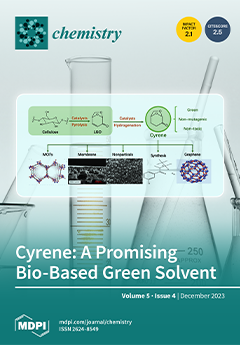One of the biologically beneficial oils against many ailments is
Achillea fragrantissima essential oil (EO). The current study focused on the comprehensive comparative chemical characterization of
A. fragrantissima EOs, which were gathered from Saudi Arabia and Egypt, as well as evaluation of their allelopathic, antioxidant, and antibacterial functions. With a respective total oil mass of 96.9% and 96.1%, 40 compounds were found in the EOs from Saudi Arabia (38 compounds) and Egypt (26 compounds). Terpenes represented the main constituents including mono- (52.6% and 75.4% from Saudi Arabia and Egypt, respectively) and sesquiterpenoids (42.1% and 19.7%, respectively). The α-thujone (12.0%), myrcenyl acetate (10.3%), alloaromadendrene oxide-(1) (5.9%), artemisia ketone (4.9%),
β-thujone (4.7%), lavandulol (4.2%), and santolina alcohol (4.0%) represented the main components of the overall oil of the Saudi Arabian plant-derived EO. However, the main constituents of the EO of the Egyptian plant were 4-terpineol (17.4%), myrcenyl acetate (9.1%), artemisia ketone (9.0%), α-thujone (8.6%), yomogi alcohol (6.2%), santolina alcohol (6.2%), and
β-thujone (5.8%). The chemometric analysis exhibited a strong association between the two EOs from Saudi Arabia and Egypt in addition to the samples collected from Jordan. The Saudi and Egyptian
A. fragrantissima’ EOs were found to have significant allelopathic potencies against the weed
C. murale. The seed germination, seedling shoot growth, and root growth of
C. murale were all reduced by the EO of the Saudi ecospecies by 79.9, 56.7, and 68.6%, respectively, with IC
50 values of 66.5, 68.0, and 69.2 µL L
−1, respectively. The two oils from Saudi Arabia and Egypt exhibited potent antioxidant activity against the DPPH free radicals, with IC
50 values of 30.94 and 28.72 mg/L, respectively. In addition, the two oils from Saudi Arabia and Egypt exhibited strong abilities to scavenge ABTS radicals with respective IC
50 values of 39.02 and 37.13 mg/L. Additionally, the two EOs showed a much higher antibacterial activity than the antibiotics tested against all bacterial strains, with the exception of
Enterobacter cloacae. The two oils exhibited antibacterial activity against the examined strains, except
Bacillus subtilis and
Salmonella typhimurium, for which the Egyptian species shown greater inhibition. The results revealed that
Escherichia coli and
Staphylococcus epidermidis were more sensitive, while
Enterobacter cloacae was more resistant.
Full article





